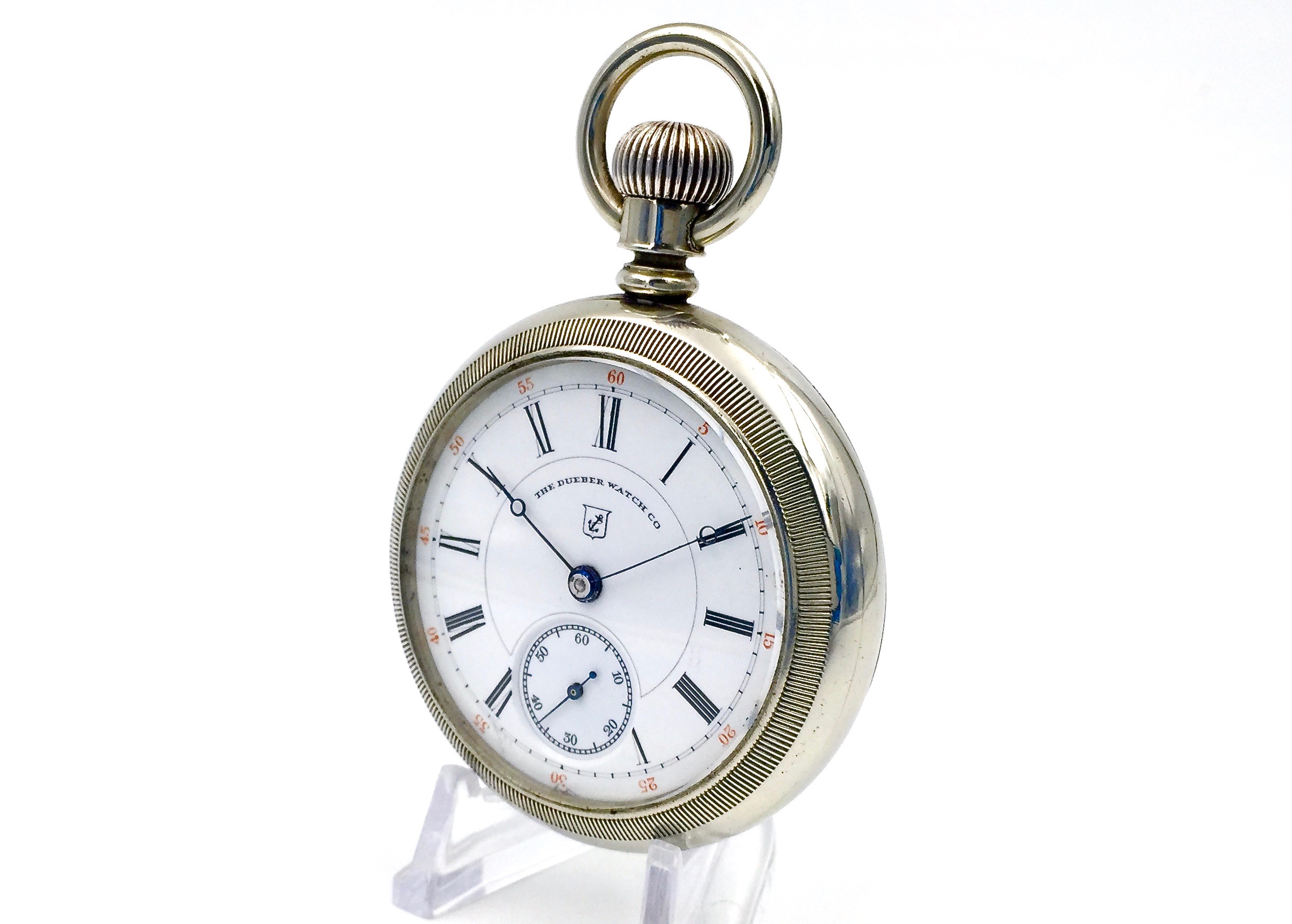
Hampden was known for making a good quality watch, however. Hampden pocket watches are highly collectible, but you may not find them worth as much as the bigger, more well known companies like Elgin and Waltham. It is also worth mentioning that some Hampden pocket watch makers added false jewels to give an otherwise fairly ordinary watch an undeserved 'high quality' tag. Eventually they introduced 17 jewel watches, then 21 jewel and finally 23 jewel for their top of the line. The Hampden pocket watch started with 15 jeweled models in their early railroad watches, (15 jewels being the minimum standard for a railroad grade). A lesser quality watch would only be made with a few jewels. These industrial grade gemstones help define the quality of a watch. Each wheel in the watch mechanism has a shaft that is threaded through a donut shaped jewel that reduces the friction. The jewels most often used in watch-making are rubies, diamonds and sapphires. A watch with no jewels won't work for long. The jewels don't get worn away as do metal grinding on metal bearings, hence improving accuracy and enhancing the life of the movement. You may hear of a 17 jewel or a 23 jewel watch, but what does it mean? The jewels are not for decoration they are put into the mechanism to act as bearings on the gears. Railway watches in the new lines were known as Special Railway and New Railway grades. Years later, this grade was discontinued when Dueber introduced his new line of 17-jewel watches. After the factory was moved to Ohio, the company began making an open faced Railway grade Hampden pocket watch.

The same watch was offered open face, but instead of being listed as a Railway grade, it was listed as grade 60. A hunting case is one that opens to show the watch and closes to protect it. It was first made only in a hunting case.

Soon a new model was introduced that used the stem to wind the watch. It remained at the top of the Hampden line after the reorganization. In its previous incarnation as the New York Watch Company, Hampden had an 18 size, 15-jewel Railway pocket watch that was one its highest grades. It had to be open faced, keep accurate time and have clear Arabic numerals in black on a white face. Standards had to be met in order for a watch to be used by railroad personnel. Railroad pocket watches were an important staple for most watch companies. Is that true? And is there some place I can find the date of the Where wind and set problems were the most expensive and difficult toįix.

He would like to have it running and usable, but I think I read once I never succeeded in winding it.Īny way with all these things not seeming to fit, I wondered if it had Push in the stem, but it felt as though it was on a spring like it would When I tried to wind it the hands turned instead. Was running when I took off the back of the case to look at the Have been in a different case at some time. Lot about these things but in examining it, I wondered if the watch may Number is 118080 and it is a pendent at 12 o'clock type.
#Dueber special pocket watch case serial numbers serial number#
There is a serial number on theĬase as well which is a 20 year Dueber which is badly worn. It turned out to be made in 1923 which would not fit with the age of the Jewell Elgin with what appears to be a metal face with painted numerals) But when I looked up the serial number of the watch, (it's a 17

He thought it belonged to a member of his mothersįamily. Was given to him when he was very young and he retired several years ago My uncle has a pocket watch which he has had for a very long time.


 0 kommentar(er)
0 kommentar(er)
